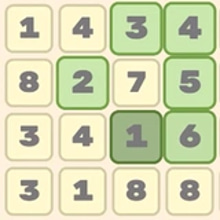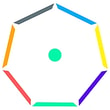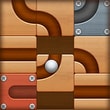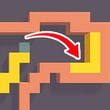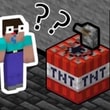🧠 Nine digits, infinite “aha”
It starts with a whisper of chalk on a board only you can hear. A row of pristine digits—1 2 3 4 5 6 7 8 9—glow like tiles on a quiet stage, each waiting for its cue. Numerical Combination (1–9) is minimalist drama for math fans: use every digit exactly once, insert them into lanes, equations, or grids, and reach target values that look simple on paper and devious in practice. One level asks for three expressions that all total 15; the next wants a magic square; then a lock puzzle where every row must rise and every column must multiply into a specific product. Your tools are basic—order, grouping, and the small alchemy of + − × ÷ and concatenation—but the satisfaction lands like a cymbal crash when the final digit clicks. Kiz10 launches you right into the board; your brain does the elegant heavy lifting.
➕ The grammar of numbers, the rhythm of play
You drag digits into slots and the board breathes back. Drop a 7 beside a 2 and decide: is it 7 + 2, 7 − 2, 7 × 2, or a proud 72 saving space for later? Parentheses matter. Order matters. The game nudges you with crisp feedback—targets pulse when you’re near, turn gold when you land the exact value. Levels escalate from single-line totals to multi-lane interlocks where one equation shares a digit with another like neighbors sharing a fence. You’ll learn to spot dead ends fast—too many big numbers left for small targets, or a leftover 1 begging to be a multiplier buddy rather than a lonely addend.
🧩 Puzzles that teach without lecturing
Early boards feel like warm-up scales for a pianist: two sums, a product, maybe a neat little 12 using 3 × 4 while saving 1 and 2 for balance. Then the design starts to wink. A “triangle board” feeds three totals from the same corners, so that aggressive 9 you just parked blocks two future options. A “glass sudoku” uses 1–9 without repeats in each region while also meeting arithmetic clues on the edges. A “river puzzle” flows digits left to right with only three operator tokens to place—suddenly you’re budgeting symbols as carefully as numbers. The rules remain gentle, the curve stays honest, and the ahas arrive like small fireworks.
🎯 Micro-tech that turns good into gorgeous
Think in sets before sums. If a board needs 10, 11, and 12 in three lanes, earmark high/low pairs now: 9+1, 7+4, 8+3, then decide which lane gets which based on cross-constraints. Keep 5 and 2 flexible; together they breed friendly tens (5×2) or polite adjustments (±2) without wrecking the budget. Use 1 as a shield for division—x ÷ 1 preserves value and buys structure when layout gets tight. Pair 9 with 8 for products when targets are large, but avoid burning them together if the board whispers “balanced diet.” And when a magic-square variant appears, remember the center must be 5—the board practically hands you a map if you listen.
🪄 Concatenation: the quiet superpower
Sometimes arithmetic can’t reach a target cleanly without long detours. That’s when a neat 12 or sly 34 saves the day. But concatenation is spice, not soup; overdo it and you starve later lines of digits. The game helps with soft warnings—concatenated tiles glow a faint sheen so you remember the cost. The craft is leaving yourself modular leftovers: if you make 56, plan a lane that loves 3 × 7 or 9 − 1, not a graveyard of odd remainders.
🌿 Modes for every brain weather
Classic Boards are the heart: fixed goals, clean constraints, flawless flow. Lock Grid adds inequality gates (those tiny < and >) so placements must respect rising columns while still hitting edge totals; it’s logic-with-a-limp in the best way. Magic & Latin mixes ask for 1–9 uniqueness per row/column and arithmetic on top, turning you into a diplomat between two rule sets. Sprint Trials race a timer with bite-size boards—thirty seconds, three lanes, one proud smirk. Zen Solve drops the clock, dims the backdrop, and lets you fidget with numbers until the chime arrives like rain on a roof.
🎵 Sound you can think to
Clicks are soft wood, not plastic. A correctly matched total plays a tiny major triad; near-misses resolve on a suspended chord that politely suggests “almost.” Dragging across a valid slot gives a feathery brush sound; illegal moves thud quietly rather than scold. When the last equation snaps shut, a single bell marks the solution and the board exhales a subtle whoosh, like pages turning. Headphones aren’t required, but they make arithmetic feel like music with rules.
✨ Visual clarity that respects pace
Digits sit in generous, high-contrast tiles that read at a glance. Operators live on slim chips you slide between numbers; they never hide the math. Targets glow cooler as you approach from below and warmer as you overshoot, a quick color language that trains your intuition without a single tooltip. Parentheses bulge just a hair when your grouping changes the current value, a small “yes, this matters” moment that keeps you honest. Undo sits one thumb away and remembers long strings of tries—the game celebrates tinkering.
🧠 Difficulty that climbs, never spikes
You’ll notice the board adding only one novelty at a time: first shared digits, then inequality gates, then limited operators, then region uniqueness. Each addition reshapes your heuristics. Where you once grabbed 9×8 for a big hit, you now distribute power like a coach setting a lineup—some lanes need captains, others need role players. Failures are informative, not mean. The post-level tips hand you a single nudge like “consider pairs that sum to 10” rather than a solution dump. It keeps pride intact while pointing at better habits.
🔓 Challenges that become rituals
Gold medals ask for elegance: minimal concatenations, strict no-division clears, or “balanced board” where each lane uses exactly one operator. Daily Combinations remix a small set of constraints and publish a clean leaderboard; ties break by fewest moves, not fastest time, so thinking well beats tapping wild. A Weekly Marathon stitches five boards with carryover rules—use fewer than three concatenations across the whole run and you’ll unlock a gloriously unnecessary confetti skin for the number 7. You’ll equip it anyway.
📈 Gentle pedagogy disguised as play
Without ever saying “lesson,” the game grows number sense. You feel factors in your thumbs, spot complementary pairs on sight, and estimate products before committing. Kids soak arithmetic structure; adults rediscover the fun of tidy reasoning. The trick is the sandbox vibe: you’re not being graded, you’re gardening sums. Each solved board leaves the field cleaner than you found it.
🛡️ Options for more minds in the meadow
Color-safe palettes for targets and errors, dyslexic-friendly numerals with distinct shapes, and a “tap-to-cycle operator” mode that reduces drag precision for small hands. A hints slider lets you choose silence, soft glow, or single-tile suggestion. Reduced motion calms the victory flare; larger tiles toggle makes mobile play cozy. Nothing bends the math; everything widens the doorway.
💡 Tiny sayings to tape above your desk
Pair extremes with middles. Preserve a 1 for surgical fixes. If a lane wants a big number, give it a big operation; if it wants finesse, use ten-pairs. Don’t hoard 9—deploy it with intent. When stuck, lock the center of a symmetric puzzle, then radiate decisions outward. And remember: subtraction is a scalpel; multiplication is a hammer—choose based on the patient.
🌐 Why it fits Kiz10 like a glove
Click, think, grin. Zero install, instant resets, and cloud saves that remember your medals, favorite palettes, and the exact board where you finally believed in 4×3+2=14 as a cornerstone, not a compromise. Sessions can be snack-sized—one board, one bell—or stretch into a focused hour where the world shrinks to nine digits and a pleasant hum.
🏁 The solve you’ll replay in your head
Last puzzle of the night. Three lanes: 12, 24, 30. Inequality arrows want rows rising, columns descending. You pocket 5 for later, marry 8 and 3 into a calm 24 with ×, and stash 1 beside 9 because you sense a 19 but refuse the temptation. Then it clicks: 6×4 for the 24 is wasteful; 8×3 is leaner, freeing 6 for 6+5+1=12, and 9 pairs with 2 and 7 to make 9+(7+2)=18… almost. You breathe, swap 7 with 5, and the lattice locks: 6+5+1 sings to 12, 8×3 beams 24, 9×2+7 lands 25—no, parentheses—9×(2+7)=27, still wrong for the 30. One more nudge: 9+(2×?); you slide 8 away and drop 3; 2×3=6; 9+6+?=30, so 15 missing—hello, 7 and 8 as 78? Too loud. Concatenate 12 instead? Not allowed—already used. Then the elegant line appears: (9×3)+8+5=40—nope. Reset calmly, pair 7×4=28, add 2, slot 9+6+?=30 with 15—use 1 and 5 there, leaving 8 for the 24. The board pings gold in a little chorus, the bell rings once, and your shoulders drop. Numerical Combination (1–9) on Kiz10 is exactly that sensation: nine patient digits, one tidy plan, and a final click that feels like a thought landing exactly where it belongs.
 Number Rush
Number Rush









